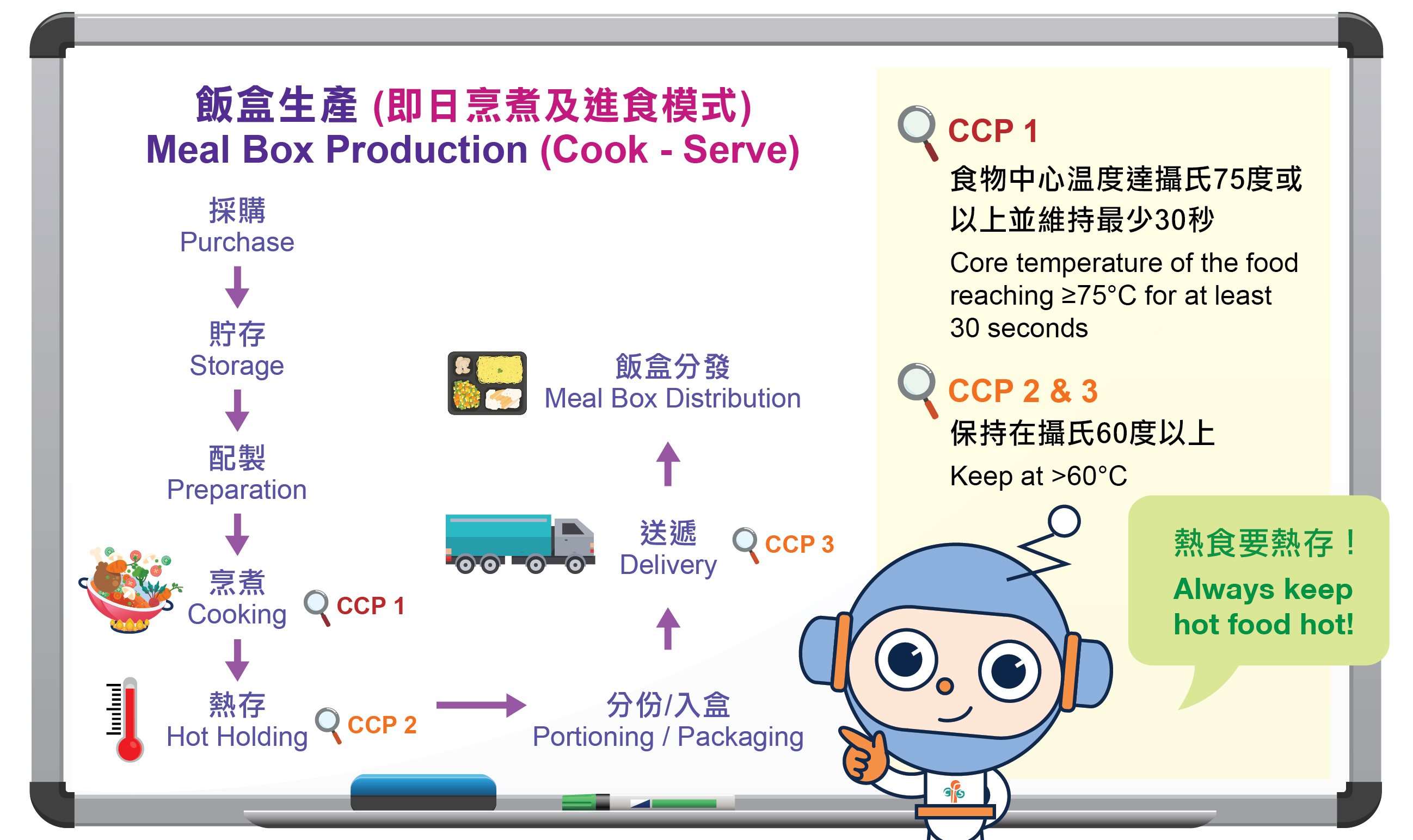
Food Safety Focus (179th Issue, June 2021) – Food Safety Platform
How to Keep Meal Box Delivery Safe?
Reported by Mr. William SO, Chief Health Inspector,
Risk Communication Section, Centre for Food Safety
In view of an increasing demand for meal boxes from commercial firms and schools, along with detection of disease-causing Bacillus cereus in a meal box sample recently reported, it is appropriately fitting to review the practices in the production and delivery of meal boxes. As meal boxes are often mass-produced, any lapses in food safety can affect a large number of people.
Food Safety Problems with Meal Box Production
The challenge of achieving food safety and quality while still meeting the acute demand for thousands of meal boxes at peak hours are all too familiar with many caterers. A common issue is improper hot holding, which implicates two faults – preparing food too far in advance, coupled with improper hot holding temperature. On the other hand, post-cooking contamination may be the result of using the same area or equipment for handling of both raw and ready-to-eat foods, poor environmental hygiene or personal hygiene of food handlers.
A Food Safety Plan
In 'Cook-Serve' operations, most food items are prepared on the day they are to be served. However, since meal box caterers have to prepare up to thousands of meal boxes before mealtime, they usually prepare food items hours in advance. The meal boxes are then held hot until they are distributed to customers for consumption, and it is a critical step to keep hot foods at a temperature too hot for bacteria to grow throughout until they are delivered to customers.
Since the Hazard Analysis and Critical Control Point (HACCP) system can effectively enhance food safety and prevent food hazards, Meal box caterers should implement appropriate measures to minimise the risks as far as possible. To facilitate the caterers in developing an effective food safety plan, suggested critical control points (CCPs) and well-recognised critical limits with particular reference to temperature aspect during production and delivery are stated below.

Figure 2: Schematic diagram and CCPs for meal box production
Overall, there are three major CCPs for meal box production for hot serving: cooking (CCP1), hot holding (CCP2) and delivery (CCP3). Pathogens may be present in raw food ingredients. Foods that are not thoroughly cooked may contain these pathogens and cause food poisoning. Therefore, all foods should be thoroughly cooked with the core temperature reaching at least 75°C for at least 30 seconds. Using a clean food thermometer to measure the core temperature of food is the best way to judge whether the food is cooked adequately for safe consumption. Where possible, cook all food items, including sauce and soup, on the day of consumption. On the other hand, the caterers should avoid preparing food too far in advance before consumption.
After cooking, food items in meal boxes should be packed into clean insulated containers to prevent cross-contamination and maintained at above 60°C for delivery as quickly as possible. If not packed immediately, keep meal boxes in warming devices at above 60°C. Of note, insulated containers generally do not have any active heating element, and they simply trap the heat of the food and stop it from escaping. Preheat hot holding equipment by suitable and feasible means before putting meal boxes in it. While the hot holding effect will dissipate over time, the caterers have the responsibility to ensure meal boxes on delivery and at the destination for consumption are kept consistently at above 60°C. Minimise the time between finishing the meal box production and the delivery to the destination to help heat preservation in the food. Alternatively, electric warming trolleys can be used to keep food consistently hot before use. The caterers should remind their customers to consume the food upon arrival as soon as possible.
|
Bacillus cereus in meal boxes |
For more information, lunch box caterers can refer to the CFS’ document "Developing a school food safety plan based on HACCP system (for school lunch box caterers)"


